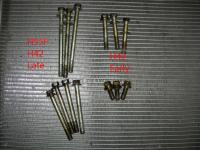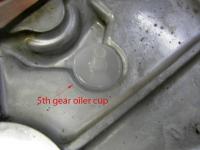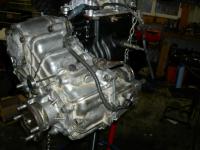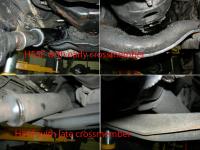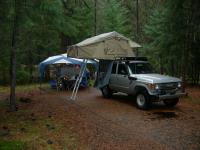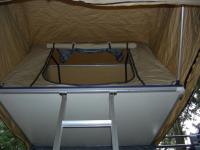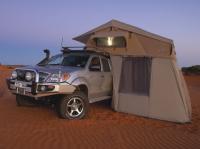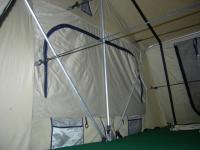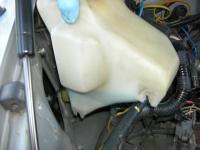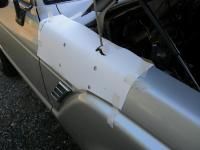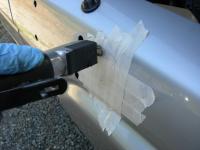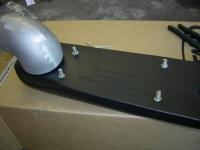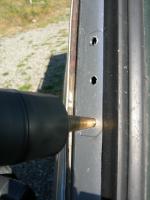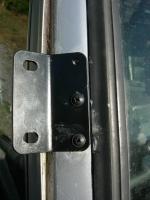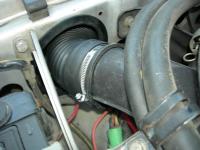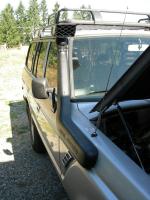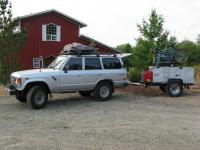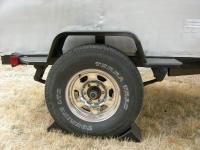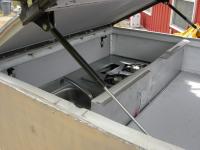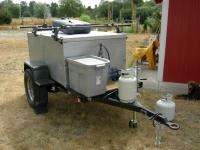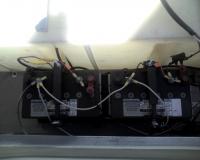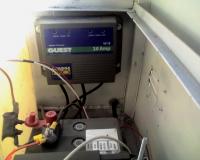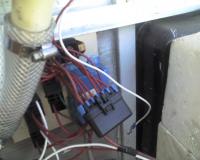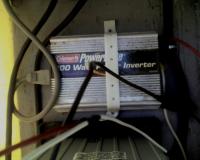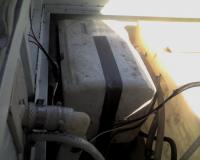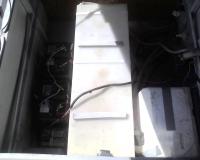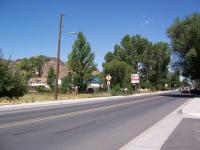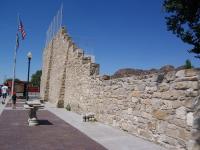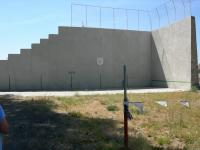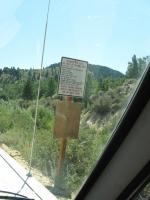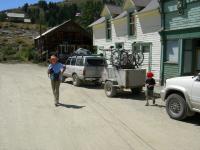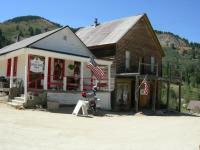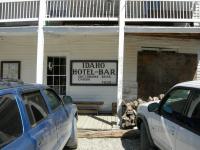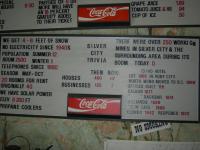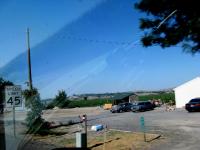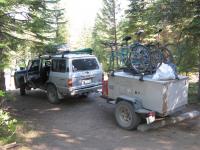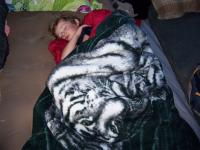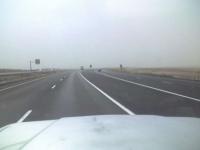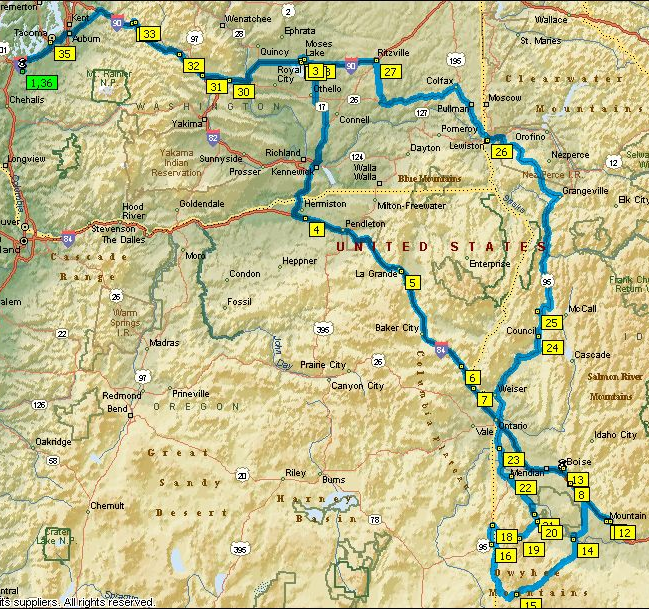I recently installed an H55F Transmission into a 10/84 built ’85 FJ60. It is commonly known that the H55F is a direct installation, and upgrade, into a 5/85 and later FJ60. There are several writeups detailing the later installation. I had always heard that the earlier trucks were much more difficult but thought I would give it a try.
The H55F offers a few benefits over the stock H42 4 speed transmission found in the US market. It has a overdrive 5th gear. In our over 55 freeway speeds this can be a blessing, it reduces the RPMs and noise. It also offers a lower 1st gear. If you do much offroad, this can be a big help in 4 low.
At first glance, the H55F looks the same as the early H42. The most noticeable difference is the extension housing making it 3 1/2 inches longer. This is were the the fifth gear is located. It also has the transfercase shifter mounting moved back a little and out.
If you haven’t rebuilt the transfercase this is an excellent time. You will need to replace the case gaskets regardless and most of the labor to rebuild it will be done. The only other parts to the rebuild is to replace the bearings.
The major difference between the early and late swaps are the few extra parts and modifications you will need. The drive shaft lengths will need to change (the front lengthened and the rear shortened by about 3.5″). Also you will need to modify the transfercase shifter or get the shifter from the later H42. I did not feel comfortable cutting and welding the cast lever and so I turned to SOR for the lever parts. You will also need the longer transfercase to transmission bolts from the later transfercase. While it is possible to use the 4speed shifter lever, the 5speed lever is a better fit and does not require modification to miss the dash.
First step is to remove the drive shafts, cross member, and disconnect the speedometer cable, ground wire and wiring harness. Using a suitable transmission jack, remove the transmission and transfercase as one piece. Carefully disassemble the transfercase per the factory service manual. Make sure to note the order of the various parts such as the speedometer gear and spacers.
Before you start to assemble the transfercase to the new H55f take note of a few things. First, on the later transfercase, you will need to plug the center bolt hole on the forward case half, using a 1/4 pipe thread tap and plug. The early case does not have this hole. The 5th gear oiler cup will also need to be installed. Unlike the other gears in the transmission and transfercase, the 5th gear is not splash oiled. Without this cup, you may quickly burn up your 5th gear.
Install a new input shaft seal in the front case half, then install a new gasket between the transmission and transfercase. This is were you need the longer bolts from the later transfercase. It is important to use a liquid sealer on the bolts that secure the front case half to the transmission. Before putting the input gear onto the input shaft, install the idler gears on the idler shaft. Continue assembly as normal.
Once the transfercase is mounted on the transmission, the complete unit can be reinstalled into the truck. The rear mount and cross member will bolt up just as it did with the H42. Now install the longer set of transfercase shifters. Make sure you get the the shifter guide when you order your shifter parts. Now is when you want to take the measurements for the front and rear drivelines. It should be a 3 1/2 inch change from the current lengths, but be sure and measure. Make sure to check with the shop doing the work to see what they want you to measure. Most of the time it will be flange to flange. It is best to measure with the vehicle on the ground. A 1 inch collapse should be plenty (this is how much shaft can travel to full compression). Also make sure the shaft is in phase before installing in the truck.
I was concerned with the clearance of the front driveline and the transmission crossmember, but with the double cardon joint on the earlier trucks it has no problem. Here are a few pictures to compare the difference between and H55F in an early FJ60 and a late FJ60.
The transfercase boot may need a little trimming to fit around the new shifter. It may be difficult to get the 5speed into gear at first. Here is a summary of some of the possibilites (cruiserparts.net is another source for the 5speed and shifter parts).


